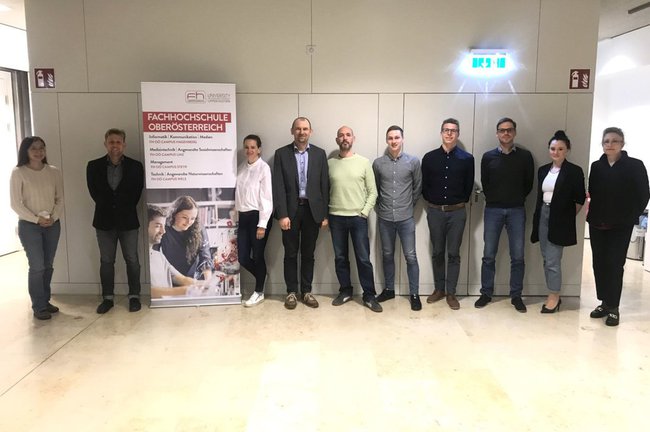Improving the Planning of Supply Chains
Joint Project of FH Upper Austria and St. Pölten UAS Strengthens Competitiveness of Companies

Weaknesses in information exchange along supply chains between customers and suppliers lead to overproduction, high stock levels, and overtime hours. This, in turn, results in a loss of customers and enormous special transport costs.
This is why the quality, planning, and handling of information influence the competitiveness of companies in the global market. The project InnoFIT of FH Upper Austria and the St. Pölten UAS develops tools to better predict supply processes.
Better Predictions in Industry 4.0
“Our research project improves the quality of predictions and, as a consequence, the long-term planning of production with the help of innovative prediction tools. For this purpose, we use the potentials of data analysis and data mining that arise from the exchange of information between suppliers and customers”, says Thomas Felberbauer, Academic Director of the study programme Smart Engineering at the St. Pölten UAS.
“In the course of the fourth industrial revolution – in other words, Industry 4.0 –information technologies are further developing rapidly in companies and the volume of available data is increasing. Based on accessible forecast history data, the project InnoFIT develops analysis methods that enable companies to use previously untapped potential for the improvement of production planning through a better understanding of customer-specific forecasting behaviour”, explains project coordinator Klaus Altendorfer of FH Upper Austria’s Research Center Steyr.
To efficiently improve supply chains, we need aspects such as data consistency, visualisation of accessing history data, and confidence within and between the participants of the supply chain. These potentials are not yet fully exploited in practice.
Recognising Potentials through Simulation
The project InnoFIT relies on historical delivery plan information to improve the quality of forecasts. To do this, the project team carry out simulation studies based on close-to-reality production structures. Subsequently, the forecasting tools are tested under realistic conditions such as those at the partner companies.
Lower Input of Resources
The developed tools are designed to improve the logistic potential so that the same level of delivery reliability can be achieved with lower stocks and input of resources. The results of the project are then made available to Austrian companies in the form of a guide.
Apart from the two universities of applied sciences, partners in the project are RISC Software GmbH and the companies NKE Austria GmbH, ZF Steyr Präzisionstechnik GmbH, MWS Hightec GmbH, and Lecapell GmbH.
